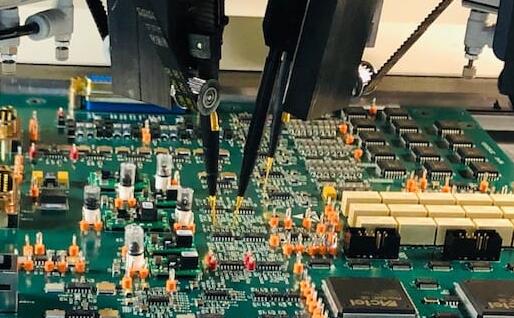Electrical testing is to evaluate the reliability of PCBs in terms of electrical performance. Mainly including insulation resistance test, voltage withstand test, power frequency response test, power factor test, etc. Through electrical testing, potential problems in PCBs can be identified, such as electrical short circuits, poor contact, etc.

The electrical testing for printed circuit boards includes capacitance testing, which is a type of test to find short circuits on the circuit board. This process involves charging the power grid and then measuring the induction capacity. Resistance test: This test measures resistance in ohms.
What are the contents of PCB electrical testing?
1. Resistance test
This test measures resistance in ohms. Resistance is a measure of the collision between electrons and atoms, which interferes with the flow of electrons when current flows through a conductor. When testing resistance, look for low resistance as an indicator of a good conductor. The longer the circuit, the thinner the resistance, which is a very important consideration that must be taken into account during testing.
2. Capacitance testing
This is a type of test that searches for short circuits in circuit boards. This process involves charging a network and measuring the sensing capacity.
3. Continuity testing
Continuity testing is a highly reliable method that ensures that the resistance between test points does not exceed necessary or required limits.
4. Comparative testing
Comparative testing is done using a main control board, which has been verified to help teach list programs. With this, it can be compared with other boards. The problem with this type of testing is that there may have been defects in the main control board before.
5. Clamshell Testing
Conduct a test on both sides of the circuit board simultaneously. This is a popular method that helps improve reliability. This is because all points on the circuit board are tested simultaneously.
6. Flip test
For flip testing, this operation can be performed on either side of the printed circuit board as a universal grid.
7. Adjacency testing
Perform short circuit testing by checking the isolation between conductors. It can test proximity or line of sight proximity.
8. Flight Probe Testing
The flying needle test is a very reliable testing method. This involves using flight probes to test sequences. In addition, this flight probe test sequence detects high-speed boards, searching for openings and short circuits throughout the board.
The role of electrical testing
1) Testing the electrical characteristics of circuit boards can ensure the stability and reliability of products, reduce failure rates, and improve production efficiency.
2) By testing the electrical characteristics of circuit boards, possible problems in circuit board production can be identified, and timely improvements can be made to improve product quality and reliability.
3) The recording and analysis of test data can provide a reference and basis for subsequent product design and production.
PCB electrical testing is very important for the electronic manufacturing industry. Only through scientific and reasonable testing methods can we ensure the improvement of product quality and customer satisfaction.